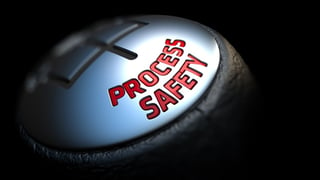How Safety Risk Management Services Can Improve Your Processes
Regardless of industry - manufacturing, chemical, industrial, nuclear - you know by now that you need a continuously updated process to keep your facility safe. It may be partially mandated by Authorities Having Jurisdiction (AHJs), it may be directed by a cracker jack team of safety professionals... or, ideally you have both.
 Having a one stop shop for testing, consulting and engineering in a risk management services (RMS) plan can be highly advantageous for telling you what you don't know. Find out what is missing, what you weren't sure of and how to improve.
Having a one stop shop for testing, consulting and engineering in a risk management services (RMS) plan can be highly advantageous for telling you what you don't know. Find out what is missing, what you weren't sure of and how to improve.
Look for a team that can provide a complete range of safety services that can be performed in both their lab facilities or on-site at your location to help you understand and address hazards that pose risk to your process facility and ensure compliance.
Key areas your safety plan should address:
Combustible Dust Explosion and Fire Hazard Evaluation
• Dust Hazard Analysis (DHA)
• Dust Management Program Development
• Equipment Hazard Evaluation
• Testing -variety of equipment to cross check
• VSP2 Relief Systems
• Flammability Hazard Evaluation
Process Hazards Analysis (PHA)
• Facilitate, Revalidate, RE-do PHAs
• Audit review PHAs
• Process, Equipment, Management of Chance (MOC)
Hazard Identification / Risk Analysis
• Flammability (Gas/Vapors)
• Combustible Dust
• Reactive Chemicals
• Cables
Consequence Analysis
• Fire and Explosion Hazards
• Vessel Overpressure Scenarios
• Chemical Reactivity Hazards
• Chemical Releases
• Vapor Cloud Dispersion
Safety Program Development
• Develop or Review Process Safety Programs
• Support Kilo Lab, Pilot Plants, Medium Scale and Commercial Scale Plants
• Auditing, Reporting, Documentation
• Identify and Prioritize Safety Gaps
• Consulting for Management of Change (MOC) impact
• Arc Flash Studies
Training
• Combustible Dust
• Flammability
• Relief System Design
• ARSST
• VSP2
Developing these programs and reviewing systematically will improve facility safety and quality, meet regulation requirements and improve ROI. Along with these, morale improves as excellence is appreciated by employees.
For more information on specifics regarding these services or where to start at your facility, please contact info@fauske.com, www.fauske.com. As always, we welcome discussion and feedback on your best practices.

